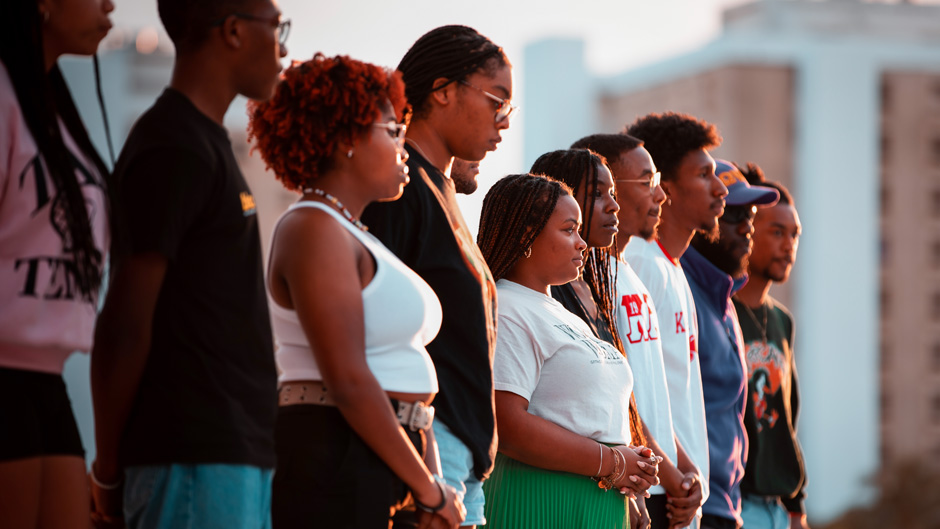As the Dauer Tower bells chimed and the sun began to set on Lake Osceola, members of the University of Miami community, including students and administrators, held a moment of silence for three minutes at the Lakeside Patio on Monday evening.
That time reflected how long Tyre Nichols, a 29-year-old Black man from Memphis, Tennessee, was beaten by five police officers who also were Black.
On the evening of Jan. 7, Nichols was pulled over for what the officers determined to be reckless driving. When Nichols attempted to flee to his home, only 100 yards away from the scene, according to his family’s lawyers, officers beat him so severely that he was pronounced dead within three days.
“Tyre was the father to a 4-year-old boy, had a passion for photography and skateboarding, and had a beautiful relationship with his mother,” said Kayla Davis, vice chair of the Black Awareness Month Committee and main student organizer of the event. “Tyre was human. Tyre was innocent while Black.”
After the video of Nichols’ death shocked the country, Davis, the Office of Multicultural Student Affairs, and several other student organizations arranged the vigil to honor him.
The other student organizations included the Black Student Leadership Caucus, United Black Students, the National Panhellenic Council, Brothers Overcoming Negativity and Destruction, and the Student Government.
“Bringing together such impactful organizations and individuals on this campus for one cause creates community,” said Davis. “And community is necessary to bring awareness to our trauma and racially motivated hate crimes that are occurring at unprecedented rates.”
Speakers expressed their feelings in response to the tragic incident. Nichols’ portrait stood beside them—along with a skateboard representing one of his many hobbies, tealight candles, and a cardboard sign that read “Justice for Tyre Nichols.”
The vigil was also held as a call to action for the University community to hold bigger discussions on police brutality, while simultaneously urging students to take advantage of any available resources to them.
Representatives from the Counseling Center, University of Miami Police Department, and the Student Government were all in attendance to make those resources readily available to students.
“Student Government has a responsibility to serve and support the student body in times of crisis,” said Chika Nwosu, vice president of SGA. “It is no different now. We’re here to provide resources, support, and a listening ear to those who are hurting,” she added.
In one emotional speech, Christopher Clarke, director of the Office of Multicultural Student Affairs, discussed his own response to Nichols’ death, his own family’s struggle, and what should prompt students to keep moving forward.
“When you talk about purpose and passion, I’m more awake than I’ve ever been before,” said Clarke. “My work, purpose, and passion are for you all, not just for the ones who look like me. It’s for me to be reflective of the things that I know exist outside of this campus, to remind us of the things we can do. And what I don’t want is for any of you to forget what your purpose is.”
Niles Niseem, a student and prominent public speaker who also lost a cousin because of police brutality, presented a spoken word poem entitled “What Is the Purpose of Living?” as a form of encapsulating many emotions that others may have experienced in relation to similar incidents of the past.
“What is the purpose of living when the enemies of the man that we are honoring tonight weren’t just stained by the color blue—that would’ve been too easy,” Niseem questioned. “They happened to be Black just like me and you.”
As the University continues to strive to create safe spaces for students and faculty and staff members to discuss matters related to racial inequality and police brutality, one private forum, Brave Spaces, took place at the Storm Surge after the vigil as an effort to begin these conversations.
“Even though we’re celebrating the life of someone who fell, we must rise,” continued Niseem in his poem. “That is the purpose of our lives. Every day when we greet the sun, we must know that the battle has already been won—despite the fact that we might not know what’s next.”

